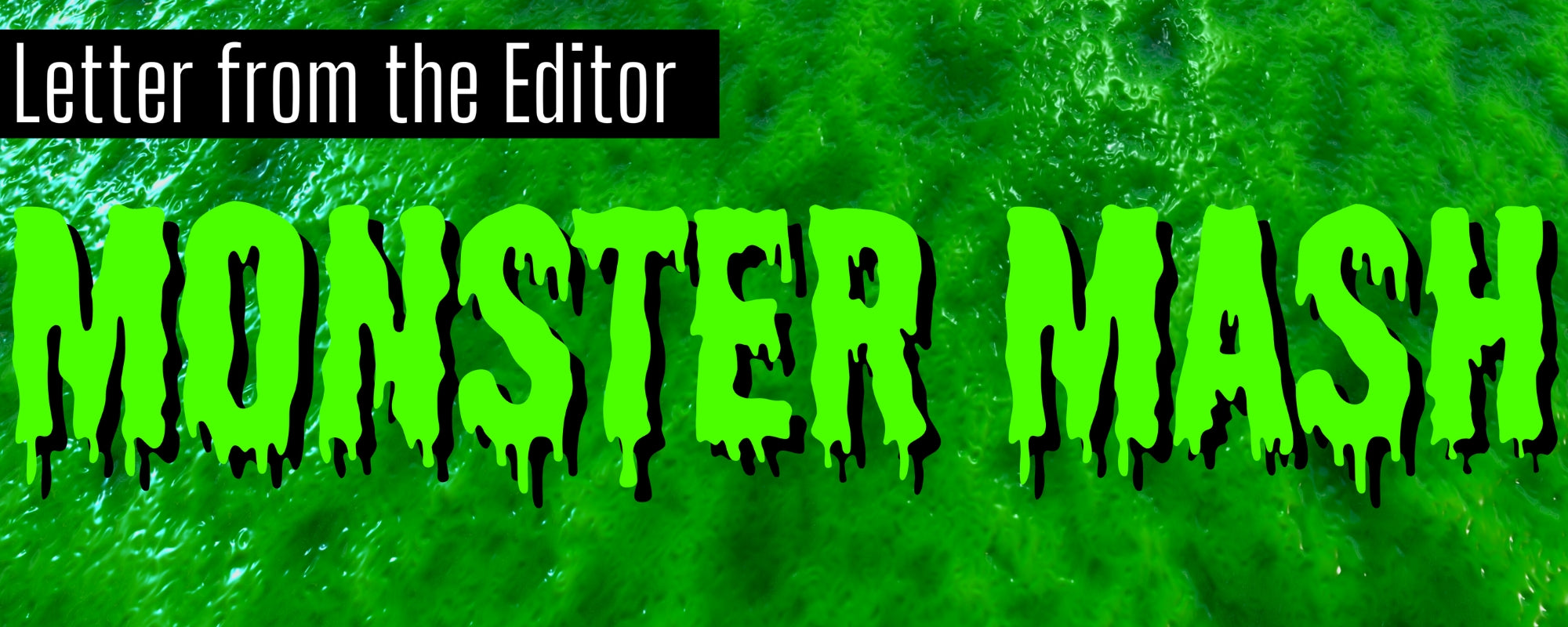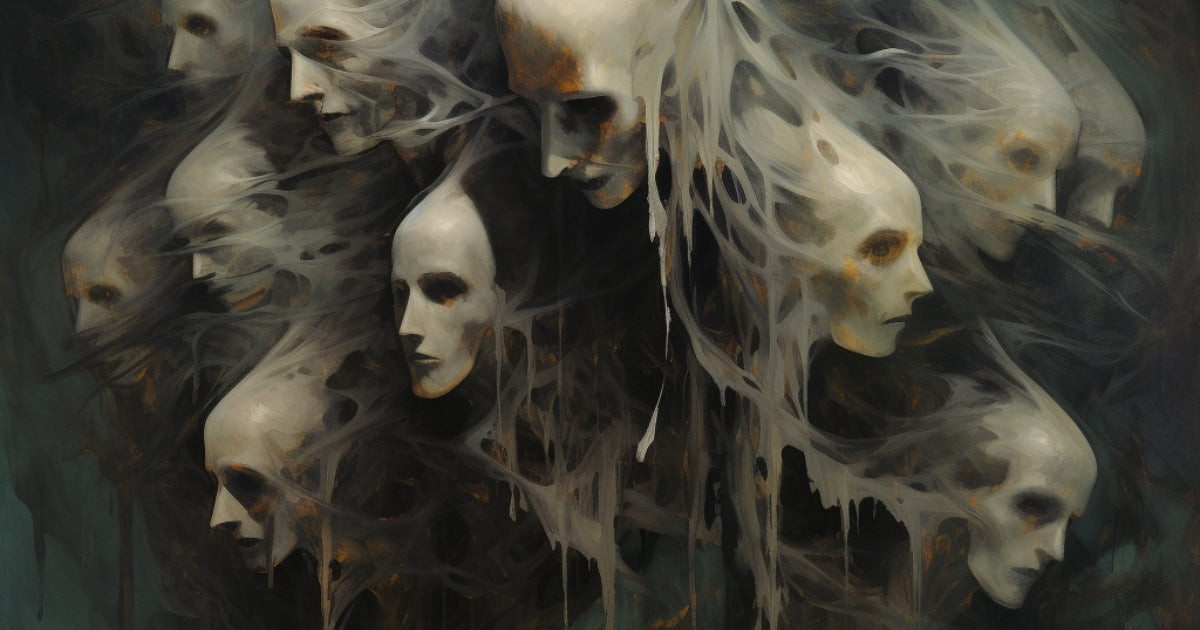

Letter from the Editor: Monster Mash
By Rob Carroll
“I’ve just always liked monsters, since I was a little kid. It was always the thing I found interesting. It’s always what I wanted to draw; it’s always what I wanted to read, and so, yeah, I don’t know. It’s a good question for a therapist, why I like monsters. But I tend not to question it. It’s what pays the bills, so that’s kind of nice.”
—Mike Mignola
Creator of Hellboy
“Monster” has many different connotations. For example, a serial killer is a monster, but so is a six-foot-four, 250-pound, All-Pro linebacker with the power to terrorize NFL quarterbacks. Jason Voorhees is a monster, but so is Mike Wazowski from Monsters, Inc. Something can be monstrous in appearance, like the Chimera of Greek myth, or exclusively monstrous in action, like Patrick Bateman from American Psycho. Some might even label you a monster for littering that one time in a public park.
But for the sake of this essay, let’s set aside the connotative dependence and turn instead to the musings of eighteenth-century romantic painter, Francisco Goya, who once claimed that it is Reason in creation that separates monsters from marvels. According to Goya, imagination united with reason creates marvels, while imagination abandoned by reason creates monsters.
I think Goya is right, and I believe it’s this close relationship between romance and tragedy, order and chaos, good and evil, the possible and impossible, that makes monsters so interesting, even relatable. Every one of us struggles with physical and emotional flaws, with the unenviable choices we’ve made, with sin; and every one of us has abandoned reason at some point in our lives. Sure, most of us want to be heroes, but in many stories, we’re unwittingly cast as the villain. Sometimes, we even cast ourselves in that role, and sometimes, we even like it.
We need to confront our own bad behavior, both in the kinetic state and the potential, and monsters help us do this in three ways: 1) They help us identify humanity’s darker impulses, to acknowledge them by name, and hopefully, to help us cast them back into the pit, triumphant; 2) They help us challenge our preconceived notions about the world and teach us that perception is not always reality, that what seems unreasonable is not (the warbling bray of a murderous space-Bigfoot doesn’t have to be terrifying—just ask Han Solo); and 3) The worst monsters, the most viscerally terrifying, the ones that hate simply to hate, remind us that true evil does exist and that it cannot be understood, only rebuked—the abandonment of reason, as Goya would say, is the point.
But setting aside the truly vile creatures that haunt this world, most monsters are just a whole lot of fun. They’re explorations of the odd, the strange, the comically exaggerated. They spook us, creep us out, cause us to shudder, shiver, and jump. They make us tilt our heads and cast a gimlet eye upon the page or screen. Some are funny, some are even cute. Some cause us to question everything we know about biology, psychology, and basic Euclidean geometry. But most of all, they’re imagination united with reason—with purpose—and this makes them marvels.
In this, the third annual Halloween Special Issue of Dark Matter Magazine, eleven stories spin thrilling tales of monsters good, bad, and complicated. In “Cat’s Eye” by Aia Järvinen, a monster in life is a monster in death, but lucky for us, the veil between worlds is thin and many creatures of this realm can see right through it. In “The Gift Horse’s Mouth” by Zachary Olson, the most terrifying kind of monster is the one that lives quietly among us, the one who looks you in the eye and smiles before they plunge the knife. In “Station 99” by Amanda Cecelia Lang, the reasoned monsters of our collective imaginations are made irrational and turned against us, but if something is beyond reason, is it also beyond defeat? In “God’s Watchful Eyes” by Grace R. Reynolds, a fallen world is no refuge for the wicked. Monsters want a world filled with prey, not competing predators. In “Ghoul” by Victoria Nations, “Lizard Man” by Polly Hall, and “Demon Child” by Kay Hanifen, we’re reminded how useless it is to judge a person’s character based solely on the assumptions built into society’s archetypal memory; a kind heart has no single defining form, nor does a monstrous one. In “Hotel Leviathan,” author Eygló Karlsdóttir illustrates the slow-moving momentum of evil and the way it gains power not through subjugation but through willing participation, and how disillusionment comes too late. In “retsnoM” by Rowan Hill, an arrogant man who manipulates the people around him must now defeat a cosmic monster that has the power to make him its literal puppet. What a handsome trophy such a silver-tongued thing would make, they both think. In “To Die a Monster” by Samuel Poots, another puppet laments his role in the deaths of so many innocents, but a man without free will cannot be a sinner, only a tool of some other being’s sin, as is shown when he starts to reclaim his autonomy and assert his true nature. And finally, in this issue’s reprint story “One Last Step” by Warren Benedetto, a little girl learns that prey can only hide for so long before they get slaughtered. To defeat monsters, she must become one—an apex predator on the hunt.
Sincerely,
Rob Carroll
Editor-in-Chief
Copyright © 2023 Rob Carroll
The Editor

Rob Carroll
Continue reading

Get Issue Updates
Promotions, new products and sales. Directly to your inbox.



